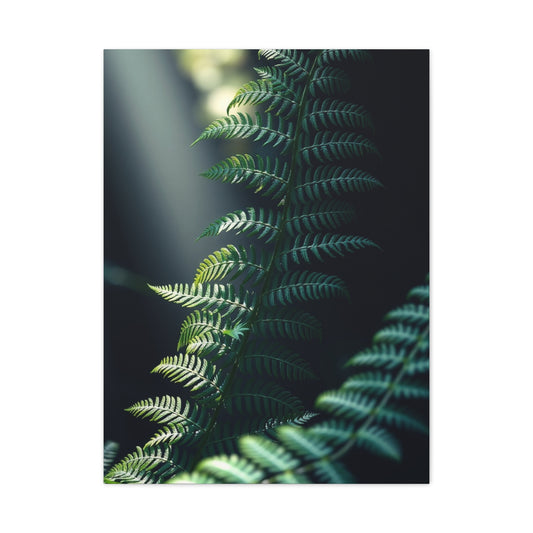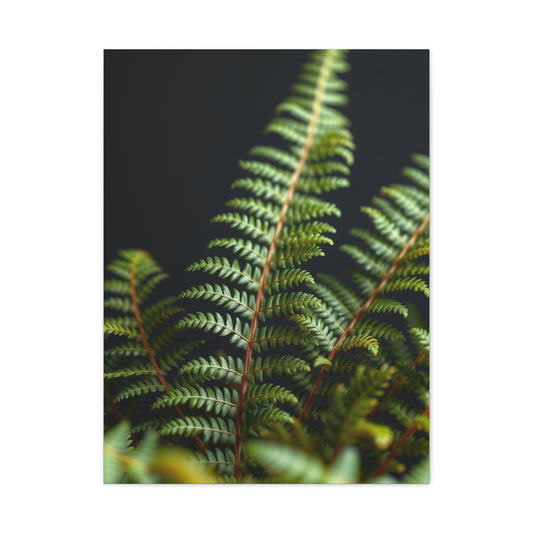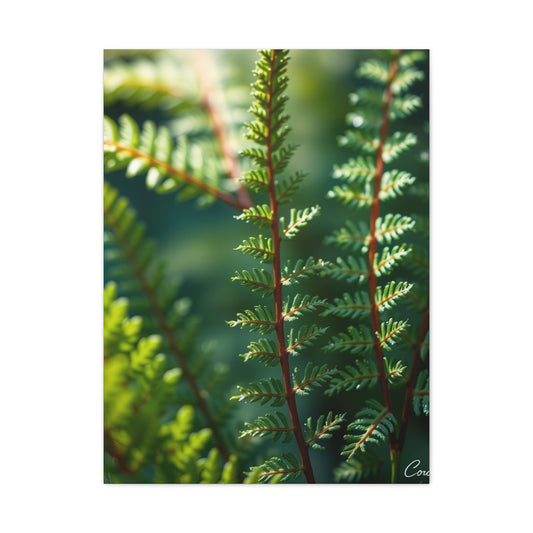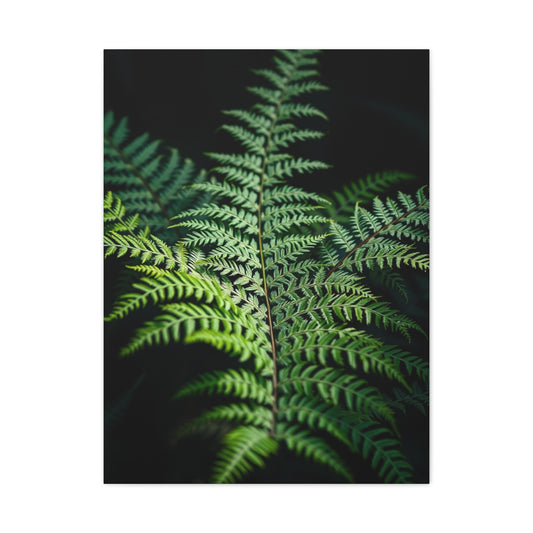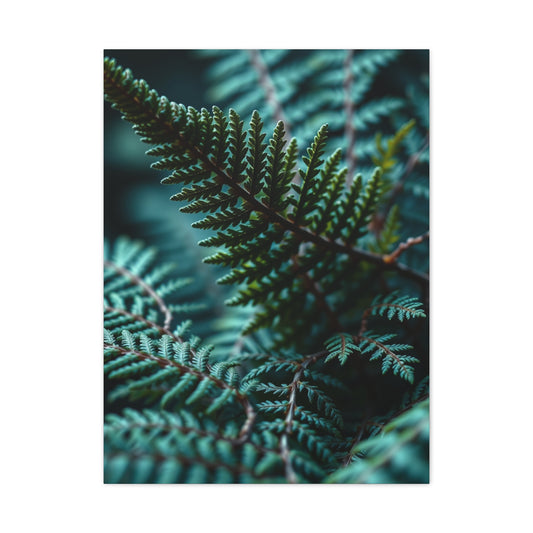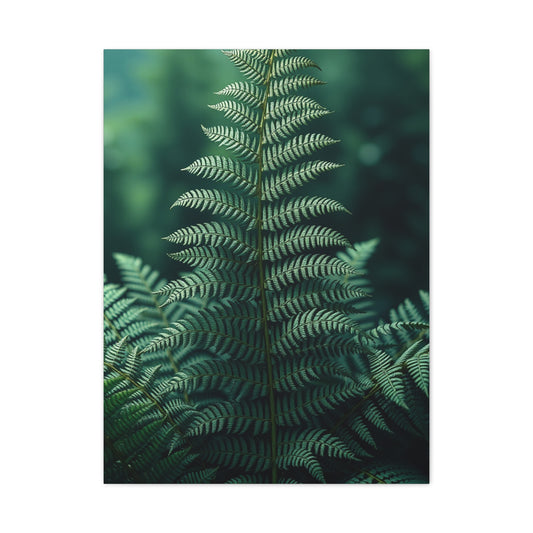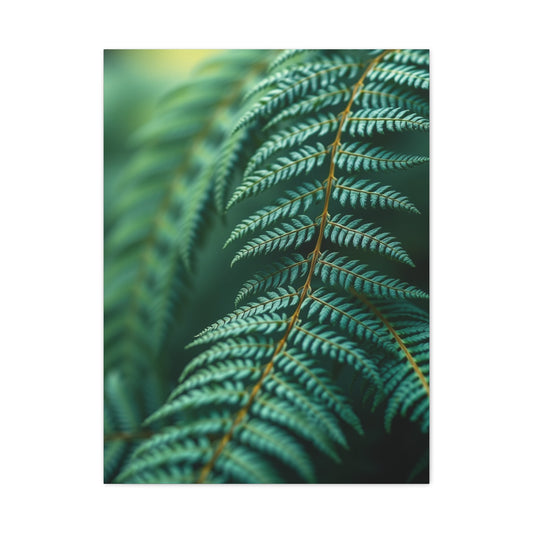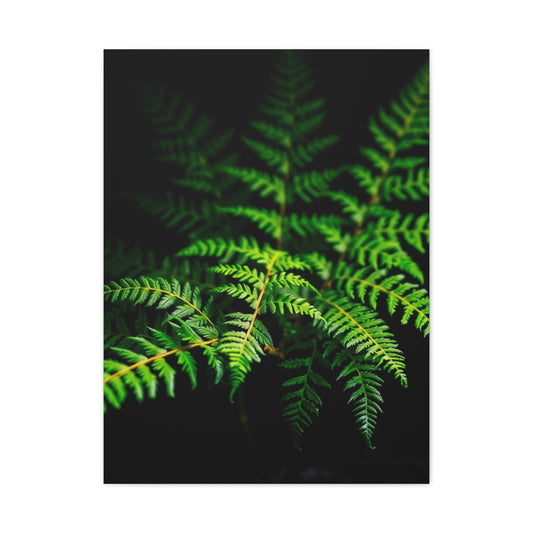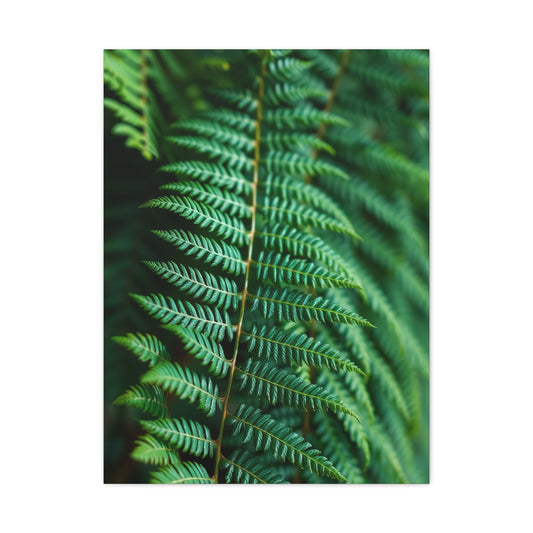Creative Ideas for Fern Wall Decor Featuring Elegant Fern Wall Art
Fern wall decor has become a compelling choice for those seeking to infuse their living spaces with both tranquility and vitality. The delicate fronds of these verdant plants introduce an element of nature that softens the rigidity of contemporary interiors, offering a subtle interplay between organic forms and architectural structure. Incorporating ferns into wall design can transform a mundane wall into a verdant tableau, one that is simultaneously invigorating and serene.
The visual appeal of ferns is rooted not only in their intricate patterns but also in the symbolic resonance they carry. Historically, ferns have represented growth, renewal, and resilience, making them an ideal addition to spaces intended for reflection or rejuvenation. Their intricate pinnate leaves create patterns that captivate the eye, drawing attention to walls that might otherwise remain overlooked. The rhythmic undulation of fern fronds can evoke a sense of motion, introducing a kinetic quality that enlivens even the most static rooms.
Harmonizing Ferns with Various Interior Styles
Ferns possess a remarkable versatility that allows them to integrate seamlessly with a myriad of design aesthetics. In a minimalist environment, their delicate structure provides a counterpoint to stark lines and muted palettes, offering a hint of whimsy without overwhelming the space. In bohemian settings, ferns contribute to the layered, eclectic character, complementing textures such as woven fabrics, macramé, and reclaimed wood. Even in contemporary spaces characterized by sharp angles and geometric forms, fern wall decor softens rigidity and introduces a touch of organic irregularity, creating a harmonious balance between structure and fluidity.
Different species of ferns can be leveraged to create visual contrast and complexity. Boston ferns, with their lush, cascading fronds, are excellent for dramatic hanging installations, while maidenhair ferns, with their delicate, lacy foliage, are ideal for framing or artistic arrangements. The selection of fern species should align with both aesthetic intent and environmental conditions, as each variety possesses specific light and humidity requirements.
Creative Methods for Displaying Fern Wall Decor
The methods for showcasing ferns on walls are as varied as the plants themselves. Hanging planters are a popular option, allowing fronds to cascade naturally, creating a sense of verticality that draws the eye upward. Wall-mounted pots or troughs can introduce dimension and texture, particularly when arranged in staggered or asymmetrical compositions. Botanical prints, whether hand-drawn or digitally rendered, provide an opportunity to bring the essence of ferns indoors without the need for maintenance, capturing their intricate forms with an artistic flourish.
DIY enthusiasts can experiment with unique formats such as terrarium frames, shadow boxes, or mounted moss and fern collages. These approaches allow for personalization and innovation, transforming walls into living galleries. Additionally, integrating ferns with other natural elements, such as driftwood or stone, can enhance the tactile richness of the installation, creating a multisensory experience that elevates the visual appeal of the space.
Arranging Ferns for Optimal Aesthetic Impact
When arranging fern wall decor, attention to balance and composition is paramount. A symmetrical arrangement can convey a sense of order and tranquility, whereas asymmetrical groupings imbue the wall with dynamism and visual intrigue. Combining living ferns with framed prints can create depth, offering layers of texture that invite closer examination. Positioning ferns at varying heights or within different types of planters encourages an organic, naturalistic appearance, mimicking the unpredictability of growth in a forest environment.
Lighting plays a critical role in accentuating the beauty of fern wall decor. Real ferns thrive in spaces with indirect sunlight, which enhances their coloration and promotes healthy growth. Artificial lighting, such as strategically placed LED spotlights or wall-mounted accent lamps, can highlight framed prints or sculptures, casting gentle shadows that emphasize the intricate forms of the fronds. By considering both natural and artificial illumination, one can create a composition that is visually captivating at all times of day.
Integrating Ferns for Wellness and Ambiance
Beyond their aesthetic contribution, ferns offer subtle benefits that influence the overall ambiance of a space. The presence of greenery has been shown to reduce stress, improve air quality, and foster a sense of connection to the natural world. Ferns, with their feathery fronds and soothing green hues, can enhance mental clarity and evoke a sense of calm, making them particularly suitable for spaces designed for relaxation or contemplation.
Moreover, the symbolic association of ferns with growth and resilience can provide a narrative element to interior design. Each installation becomes more than decoration; it is a visual metaphor for regeneration and vitality. Incorporating ferns into living rooms, bedrooms, or study areas can subtly reinforce these themes, creating a space that is both visually engaging and emotionally resonant.
Fern wall decor offers a sophisticated means of introducing natural beauty into indoor environments. Its versatility across design styles, combined with the rich symbolism and calming presence of living greenery, ensures that it remains a timeless element in contemporary interior design. Whether arranged in hanging planters, framed prints, or creative DIY installations, ferns provide both aesthetic and psychological enrichment, transforming ordinary walls into lush, inspiring landscapes.
Exploring the Varieties of Ferns for Wall Decor
The diversity of ferns offers an expansive palette for interior design, each variety bringing its own texture, form, and character to wall decor. Understanding the distinctions among species allows for thoughtful arrangements that enhance the visual and sensory experience of a space. Boston ferns, for example, are renowned for their exuberant, arching fronds. Their lush foliage cascades gracefully from hanging planters, creating a dramatic effect that evokes a miniature rainforest indoors. Maidenhair ferns, by contrast, possess delicate, lacy fronds that convey elegance and subtlety, ideal for framing or as part of a layered wall installation.
Other less common ferns, such as the bird’s nest fern or staghorn fern, introduce sculptural qualities to interiors. Bird’s nest ferns, with their broad, undulating leaves, provide a striking focal point, particularly when mounted on textured backdrops such as reclaimed wood or stone. Staghorn ferns, with their antler-like fronds, challenge conventional expectations of wall greenery, transforming vertical surfaces into living sculptures that command attention. By mixing varieties, one can create a dynamic interplay of shapes, patterns, and tones, cultivating a wall that feels alive and continually engaging.
Innovative Wall Display Techniques
While traditional hanging planters remain popular, there exists a vast array of inventive methods for incorporating ferns into walls. Floating shelves can be used to stage small ferns in staggered arrangements, introducing rhythm and variation to the composition. Wall-mounted terrariums provide a microcosmic ecosystem, blending ferns with mosses, small stones, and bark to create immersive natural vignettes. Shadow boxes and vertical gardens allow for both depth and texture, enabling the eye to move across layers of living and artistic elements seamlessly.
Framed botanical prints or pressed ferns can complement live installations, capturing intricate details that might otherwise be missed. The juxtaposition of living and static elements creates a multifaceted experience, blending the ephemeral beauty of natural growth with enduring artistic expression. Artists and DIY enthusiasts can experiment with unconventional media, such as resin-encased fronds or moss panels, adding tactile and visual intrigue to wall surfaces.
Strategic Placement and Composition
Placement is essential in ensuring that fern wall decor enhances rather than overwhelms a space. Taller, more robust ferns are well-suited for prominent focal walls, drawing attention upward and creating vertical drama. Delicate varieties are best employed in clusters or interspersed with prints, lending subtle texture without dominating the visual field. Symmetry can convey formality and tranquility, while asymmetry introduces playfulness and energy, allowing the natural irregularity of fern growth to guide design choices.
Grouping ferns with complementary decor elements, such as wooden frames, woven baskets, or metallic accents, can amplify their aesthetic impact. Consider the sightlines and vantage points from which the wall will be viewed, ensuring that each element contributes to a cohesive narrative. By layering heights, textures, and materials, a wall becomes a multidimensional canvas that stimulates both sight and touch.
Lighting Considerations for Fern Displays
The visual success of fern wall decor is intrinsically tied to lighting. Living ferns thrive under indirect sunlight, which highlights the lush green tones of the fronds without risking scorching. Window placement, orientation, and seasonal light shifts should be considered when arranging real plants. Artificial lighting can enhance framed artwork and accentuate textures, with adjustable spotlights or concealed LED strips casting subtle shadows that enhance the natural undulations of leaves.
For vertical gardens or terrariums, ambient light sources that mimic natural daylight can help maintain plant health while preserving aesthetic integrity. The interplay between light and foliage adds a temporal dimension to wall decor, as shadows move and shapes shift throughout the day. This dynamic quality reinforces the living, breathing essence of the installation, making the wall a continually evolving focal point.
The Psychological and Sensory Benefits of Ferns
Beyond aesthetics, fern wall decor contributes to a more profound sensory experience. The presence of greenery is known to reduce stress, enhance mood, and foster a sense of connection to nature, even in urban interiors. The soft, feathered texture of fern fronds encourages tactile engagement, inviting touch and interaction. Their presence can subtly alter a room’s atmosphere, infusing it with serenity, vitality, and a sense of renewal.
Ferns also offer an olfactory component in some varieties, releasing faint, earthy aromas that enhance the immersive experience. Their growth patterns, whether cascading, upright, or sprawling, convey vitality and movement, reinforcing the perception of life and continuity within the space. By thoughtfully integrating ferns into walls, designers and homeowners can cultivate environments that nourish both the senses and the psyche.
Maintaining Fern Wall Installations
Caring for fern wall decor requires attention to species-specific needs. Most ferns prefer indirect sunlight, high humidity, and regular moisture. Hanging installations should be accessible for routine misting, pruning, and inspection, ensuring that fronds remain healthy and vibrant. Overwatering should be avoided, as stagnant moisture can encourage fungal growth or root rot.
For framed or preserved fern art, maintenance is minimal but should include dusting and occasional light exposure to prevent fading. Vertical gardens and terrariums may require more frequent monitoring to maintain equilibrium among soil, moisture, and light levels. By balancing aesthetic goals with horticultural considerations, fern wall decor can remain a thriving, visually captivating feature over time.
Creating Seasonal and Thematic Variations
Ferns offer unique opportunities for seasonal styling and thematic variation. In spring and summer, living ferns can be paired with flowering plants or fresh greenery to celebrate growth and renewal. In autumn and winter, preserved ferns or botanical prints can maintain a naturalistic ambiance without requiring intensive care. By rotating elements or adjusting compositions, walls can reflect seasonal transitions and evolving moods, keeping the decor dynamic and engaging.
Combining ferns with complementary textures, colors, and forms—such as dried grasses, woven fibers, or metallic accents—can create thematic installations that reinforce design narratives. Whether emphasizing serenity, drama, or whimsicality, ferns provide a versatile foundation upon which imaginative compositions can be built.
The variety, adaptability, and subtle beauty of ferns make them exceptional candidates for wall decor. From cascading Boston ferns to delicate maidenhair fronds, the range of options allows for endless creativity in composition, display, and thematic exploration. Thoughtful placement, lighting, and maintenance ensure that both living and artistic installations remain vibrant, while their psychological benefits contribute to a serene and invigorating environment. By embracing the rich diversity of ferns, one can transform walls into living, breathing expressions of nature and artistry.
The Art of Combining Ferns with Wall Textures
Ferns are uniquely suited to complement and enhance various wall textures, adding depth and visual intrigue to interiors. Smooth surfaces such as painted walls or plaster provide a clean canvas for highlighting the intricate structure of fern fronds, allowing their feathery silhouettes to stand out. Conversely, textured backdrops like exposed brick, reclaimed wood, or rough stone create a dynamic interplay between natural forms, producing a tactile richness that draws the eye and encourages closer observation.
Layering ferns against contrasting textures can amplify their visual presence. For example, a cascading Boston fern placed against a rustic wooden panel creates a striking juxtaposition of soft and rugged elements. Maidenhair ferns, with their delicate lacy foliage, work beautifully against minimalist or monochromatic backgrounds, providing subtle ornamentation without overwhelming the space. By strategically pairing ferns with various wall textures, one can create a multidimensional composition that engages both sight and touch.
Integrating Ferns with Color Schemes
Color harmony plays a crucial role in fern wall decor, ensuring that greenery complements rather than clashes with existing palettes. Ferns naturally introduce shades of green that range from muted olive to vibrant emerald, providing both contrast and cohesion depending on surrounding colors. Neutral walls, such as shades of beige, grey, or off-white, allow ferns to become the focal point, highlighting their intricate fronds and subtle tonal variations.
For bolder interiors, ferns can act as grounding elements, balancing vivid or saturated hues. For example, emerald green fronds against deep navy or burgundy walls create a lush, sophisticated look, while paler green ferns paired with soft pastels evoke a serene and ethereal ambiance. Combining ferns with other complementary botanical elements, such as moss panels or trailing vines, can introduce nuanced shades of green, enhancing the overall depth and harmony of the composition.
Vertical Gardens and Multi-Layered Installations
Vertical gardens offer one of the most immersive ways to incorporate ferns into wall decor. By arranging multiple varieties in a tiered or staggered configuration, one can create a living tapestry that transforms a wall into a verdant focal point. Incorporating moss, small epiphytic plants, or trailing vines with ferns introduces additional layers of texture, color, and dimension, resulting in a dynamic and ever-evolving installation.
Multi-layered arrangements benefit from thoughtful planning, considering factors such as plant size, growth patterns, and light requirements. Taller ferns can occupy upper tiers, cascading downward to create a sense of movement, while smaller, delicate varieties fill in gaps and provide intricate detail. Integrating framed prints or preserved specimens within vertical gardens adds visual contrast, blending ephemeral and permanent elements in a harmonious composition.
Balancing Real and Artificial Fern Elements
While living ferns provide dynamic movement and natural vitality, incorporating artificial elements can enhance versatility and longevity. High-quality faux ferns, preserved specimens, or resin-encased fronds offer texture and form without the ongoing care requirements. These can be interspersed with living ferns to maintain continuity while reducing maintenance burdens, particularly in spaces with limited natural light or fluctuating humidity.
Blending real and artificial elements requires careful attention to color, scale, and placement. Artificial fronds should mimic the natural variations in hue and shape found in living plants, preventing the installation from appearing static or uniform. When balanced effectively, this combination creates a visually rich and resilient wall display that remains captivating throughout the seasons.
Lighting as a Sculptural Element
Lighting transforms fern wall decor from a simple installation into an evocative, sculptural experience. Indirect sunlight nurtures living ferns while casting gentle shadows that emphasize the intricacies of their fronds. For artificial illumination, adjustable spotlights, track lighting, or concealed LEDs can create dramatic effects, highlighting textures and producing layered shadows that add depth.
For vertical gardens or framed fern displays, lighting can delineate spatial hierarchies, drawing attention to focal points or areas of interest. By experimenting with intensity, angle, and color temperature, one can evoke moods ranging from tranquil and contemplative to vibrant and energetic. Thoughtful lighting not only showcases the physical beauty of ferns but also enhances the emotional resonance of the space.
Seasonal Care and Adaptation
Fern wall decor benefits from seasonal attention to maintain vitality and aesthetic appeal. During spring and summer, living ferns typically thrive with regular watering and higher humidity, while mild fertilization can encourage robust growth. Autumn and winter often require reduced watering and protection from drafts or temperature fluctuations, as many fern varieties are sensitive to environmental stressors.
Adjusting arrangements seasonally can also invigorate wall decor. Swapping out delicate maidenhair ferns for hardier Boston ferns in certain months, or alternating live ferns with preserved specimens, ensures that the wall remains visually dynamic year-round. These adaptations highlight the living essence of fern installations while accommodating practical considerations such as light availability and indoor climate.
Psychological and Emotional Dimensions
Beyond aesthetics, fern wall decor exerts a subtle psychological influence on indoor environments. Greenery has long been associated with calm, restoration, and mental clarity, and ferns are no exception. Their delicate fronds and intricate patterns can induce mindfulness, encouraging observers to pause and appreciate the nuances of natural form.
The cascading movement of ferns introduces a sense of flow and continuity, reflecting the rhythms of nature and fostering a connection to the outdoors. By incorporating fern walls into living rooms, bedrooms, or study areas, one can cultivate spaces that are not only visually pleasing but also emotionally restorative, promoting well-being and tranquility.
DIY Projects and Personalized Expressions
Ferns lend themselves exceptionally well to DIY creativity, offering opportunities for personalized and unique installations. Shadow boxes, mounted moss panels, or framed pressed fronds allow for experimentation with scale, texture, and layout. Hanging planters or tiered vertical gardens can be customized to fit specific wall dimensions and stylistic preferences.
Artists and homeowners can also explore unconventional pairings, combining ferns with driftwood, stone, or woven textiles to create multisensory compositions. These projects not only highlight the visual appeal of ferns but also encourage tactile engagement, adding an interactive dimension to wall decor. By embracing DIY approaches, one can transform ordinary walls into living canvases that reflect individuality and artistry.
Ferns provide unparalleled versatility for enriching interior walls with natural elegance and vitality. Through careful consideration of texture, color, lighting, and seasonal adaptation, these living elements can be orchestrated into arrangements that captivate the eye and nurture the senses. Whether incorporated into vertical gardens, framed prints, or personalized DIY installations, fern wall decor remains a timeless and dynamic way to infuse spaces with organic beauty and emotional resonance.
Curating Fern Wall Decor for Different Room Types
Ferns are remarkably adaptable, making them suitable for a wide array of interiors. In living rooms, they serve as verdant anchors, softening rigid furniture lines and introducing a tranquil, inviting ambiance. Their cascading fronds can fill vertical spaces, drawing the eye upward and enhancing perceptions of height. In bedrooms, ferns offer a calming influence, their intricate textures and gentle green hues promoting relaxation and restful sleep.
Bathrooms provide an ideal microclimate for many fern species due to higher humidity, making them excellent candidates for wall-mounted planters or terrariums. In home offices or study areas, ferns contribute to mental clarity and focus, subtly reducing stress while enriching the visual environment. Even in kitchens or dining spaces, smaller ferns or framed botanical prints can introduce organic elements that complement culinary and social activity, harmonizing the atmosphere with natural serenity.
The Role of Scale and Proportion in Wall Design
When incorporating ferns into wall decor, scale and proportion are critical considerations. Large, dramatic ferns, such as Boston or staghorn varieties, are most effective as focal points, dominating walls or corner spaces with their architectural presence. Smaller ferns, like maidenhair or button ferns, are better suited to clusters, framed installations, or layered arrangements where intricate detail can be appreciated up close.
The proportion between ferns and surrounding elements—furniture, artwork, or shelving—is equally important. Overcrowding a wall can diminish the elegance of the plants, while too sparse an arrangement may fail to create visual impact. By thoughtfully calibrating the size and spacing of ferns in relation to their environment, one can achieve a harmonious composition that feels both abundant and refined.
Integrating Ferns with Other Natural Elements
Combining ferns with complementary natural elements enhances the sensory and aesthetic richness of wall decor. Moss panels, trailing vines, or epiphytic plants can introduce variation in texture, color, and growth patterns, resulting in a multilayered living wall. Wood, stone, or bamboo accents further accentuate the organic quality of fern arrangements, producing a cohesive, nature-inspired tableau.
Incorporating unexpected materials, such as driftwood, ceramic vessels, or woven textiles, can elevate the installation into a work of art. By juxtaposing the soft, feathered fronds of ferns with rigid or structured elements, designers create contrast and tension, enhancing visual intrigue while maintaining a naturalistic overall effect.
Framing and Preserving Fern Art
Preserved or framed ferns offer long-lasting aesthetic appeal without the maintenance demands of live plants. Pressed fern specimens can be arranged in artistic patterns within glass frames, creating delicate, ethereal compositions. Resin encasement provides another method, capturing the intricate detail of fronds while producing a tactile, durable piece suitable for display in any environment.
These methods allow fern art to transcend seasonal limitations and indoor climate variations. By pairing preserved ferns with living plants in a single installation, one can achieve a layered, dynamic effect that balances longevity with the organic vitality of living greenery.
Enhancing Depth Through Layering
Layering is a powerful strategy for creating visually compelling fern walls. Combining plants of differing heights, textures, and densities introduces depth, encouraging the eye to move across the composition. Hanging ferns in front of framed prints, or positioning trailing varieties above upright specimens, produces an immersive, three-dimensional effect that transforms flat surfaces into dynamic landscapes.
This approach benefits from careful attention to perspective and sightlines. By arranging elements in staggered or asymmetrical configurations, one can evoke the natural randomness of forest growth, creating a wall that feels alive and continually evolving. Layering also allows for the integration of complementary materials, such as driftwood, stone, or woven panels, adding further complexity and tactile interest.
Seasonal and Environmental Considerations
Maintaining fern wall decor requires awareness of environmental factors and seasonal changes. Most ferns flourish in indirect sunlight and prefer consistently moist soil, with humidity levels that mimic their natural habitats. Seasonal adjustments may involve reducing water in cooler months, repositioning plants to capture available light, or supplementing with artificial grow lights in areas with limited natural illumination.
Temperature stability is equally crucial, as sudden drafts or heat fluctuations can stress delicate fronds. By tailoring care routines to seasonal and environmental conditions, fern wall decor can remain vibrant and healthy year-round, ensuring that both living installations and preserved specimens continue to provide visual and emotional enrichment.
Psychological and Aesthetic Impact
Ferns contribute subtly but profoundly to the psychological atmosphere of a space. The visual complexity of fronds encourages mindfulness and contemplation, while their cascading forms evoke calm and continuity. Greenery, in general, is known to reduce stress, enhance focus, and foster emotional well-being, making fern walls particularly beneficial in high-traffic or work-centric areas.
The combination of texture, color, and movement imbues interiors with a sense of natural rhythm, transforming otherwise static walls into living, breathing features. By strategically integrating ferns into a room’s overall design, one can cultivate an environment that supports both mental clarity and sensory pleasure.
Innovative DIY and Customization Ideas
Ferns lend themselves to a wide range of DIY and personalized applications. Wall-mounted planters can be customized in shape, material, and arrangement to suit individual taste and spatial requirements. Shadow boxes or terrariums can combine living ferns with moss, stones, or small decorative objects, producing miniature ecosystems that invite observation and interaction.
Creative experimentation with color, material, and form further enhances the uniqueness of fern wall decor. For instance, metallic or ceramic planters can contrast elegantly with feathery fronds, while irregular or sculptural arrangements introduce a playful, contemporary edge. These projects offer both aesthetic reward and personal expression, allowing homeowners to cultivate walls that reflect individuality and artistic vision.
Fern wall decor remains a versatile and captivating method for integrating nature into interior spaces. Through careful attention to scale, texture, layering, and environmental considerations, ferns can transform ordinary walls into immersive, sensory-rich installations. Whether combined with other natural elements, framed as preserved art, or arranged in cascading living walls, ferns provide enduring visual appeal, psychological benefits, and opportunities for creative expression. Their timeless elegance ensures they remain an essential component of thoughtful, nature-inspired design.
The Timeless Elegance of Fern Wall Decor
Fern wall decor transcends fleeting design trends, offering enduring beauty and versatility. Its subtle interplay of form, color, and texture provides both visual stimulation and a sense of tranquility, making it an ideal addition to diverse interior settings. Whether used in minimalist spaces, bohemian interiors, or contemporary designs, ferns lend walls a refined, organic aesthetic that resonates with natural harmony.
The timeless appeal of ferns lies not only in their visual intricacy but also in their symbolic significance. Often associated with resilience, growth, and renewal, these plants imbue interiors with an underlying narrative of vitality. Their presence on walls transforms static surfaces into living stories, inviting observers to engage with both form and meaning.
Elevating Interiors with Vertical Fern Gardens
Vertical fern gardens represent a pinnacle of creative wall design, integrating multiple species to create immersive, multidimensional compositions. By arranging fronds at varying heights, densities, and angles, designers can craft walls that resemble miniature forest canopies. This approach encourages movement of the eye, drawing attention to individual textures and patterns while maintaining a cohesive overall aesthetic.
Incorporating complementary plants, mosses, or trailing vines enhances the depth and diversity of vertical gardens. The resulting layers not only captivate visually but also provide subtle auditory and tactile experiences, as the gentle rustle of fronds interacts with ambient airflow. Such installations create an all-encompassing sensory environment, bridging the gap between indoor spaces and the natural world.
Framed Fern Art and Botanical Illustrations
For spaces where live plants may be impractical, framed fern art provides a lasting alternative that preserves the beauty of fronds in a controlled medium. Pressed specimens, hand-drawn botanical illustrations, or resin-encased leaves capture fine details and intricate patterns, offering visual sophistication without maintenance demands.
Integrating framed fern art with living arrangements can produce a harmonious contrast, blending ephemeral vitality with enduring formality. This interplay allows walls to tell layered visual stories, with the movement and unpredictability of live plants balanced by the precision and permanence of artistic representation.
The Role of Texture and Material in Design
Texture is a defining element in successful fern wall decor. Soft, feathered fronds juxtaposed against hard surfaces, such as wood, metal, or stone, create compelling contrasts that enhance visual interest. Incorporating woven fabrics, moss panels, or ceramic planters adds additional tactile dimensions, encouraging engagement through both sight and touch.
Material choices influence not only aesthetics but also mood. Natural fibers and untreated surfaces evoke warmth and intimacy, while polished metals and glass introduce modernity and refinement. By thoughtfully selecting and combining materials, designers can amplify the expressive potential of ferns, ensuring each wall installation conveys intentionality and artistry.
Seasonal Adaptation and Dynamic Arrangements
Seasonal adaptation ensures fern wall decor remains vibrant throughout the year. Adjusting watering schedules, repositioning plants relative to changing sunlight, and rotating species according to environmental conditions preserves both health and visual appeal. Preserved or artificial ferns can complement living installations during periods of low light or temperature variation, maintaining continuity without compromising aesthetics.
Dynamic arrangements allow walls to evolve with the seasons. Cascading ferns may be paired with seasonal blooms or dried botanicals, while framed art can be rotated to reflect changing moods or themes. This fluidity transforms walls into living narratives, fostering continual engagement and visual refreshment.
Psychological Benefits of Green Walls
Fern wall decor offers subtle but profound psychological benefits. Exposure to greenery is associated with reduced stress, improved focus, and heightened mental clarity. The delicate movement of fronds and the complexity of their patterns encourage mindfulness, inviting occupants to pause, observe, and appreciate natural beauty.
By integrating fern walls into spaces intended for relaxation, study, or social interaction, interiors become more than functional areas—they become environments that support emotional well-being and sensory enrichment. This dual impact, combining aesthetics with mental and emotional benefits, underscores the enduring value of fern wall decor.
DIY Innovations and Personalization
Ferns provide ample scope for DIY innovation and customization. Homeowners can experiment with wall-mounted planters, terrariums, or layered vertical gardens, tailoring installations to suit spatial dimensions and personal taste. Combining ferns with unconventional materials—such as driftwood, resin, or sculptural elements—introduces individuality and artistic expression.
Shadow boxes, preserved specimens, or mixed-media panels offer additional avenues for creative exploration. These projects not only elevate aesthetic appeal but also foster a sense of ownership and engagement, allowing individuals to craft walls that reflect their personality, style, and connection to nature.
Maintaining Longevity and Vibrancy
Sustaining fern wall decor requires a balance of aesthetic consideration and practical care. Most ferns thrive under indirect sunlight, high humidity, and consistent watering. Observing frond health, trimming damaged leaves, and monitoring soil conditions ensure longevity and vibrancy. For framed or preserved pieces, simple dusting and protection from prolonged direct sunlight maintain their visual integrity over time.
By integrating both living and preserved elements thoughtfully, walls can remain dynamic and visually captivating, providing an enduring sense of nature-inspired sophistication.
Conclusion
Ferns have emerged as one of the most versatile and enchanting elements for wall decor, offering a unique combination of aesthetic beauty, textural intrigue, and psychological benefit. Across diverse interior styles, from minimalist and modern to bohemian and eclectic, fern installations provide a dynamic interplay of organic form and structured space, transforming ordinary walls into living, breathing canvases. Their delicate fronds, intricate patterns, and cascading movements introduce depth, rhythm, and a sense of motion that enliven interiors while simultaneously fostering a calming and restorative atmosphere.
The adaptability of ferns is a central reason for their enduring appeal. Boston ferns, with their luxuriant, arching fronds, create dramatic focal points, while maidenhair ferns offer delicate, lacy details that enhance subtler arrangements. Less common varieties, such as staghorn or bird’s nest ferns, provide sculptural interest, challenging conventional expectations of greenery and adding distinctive character to vertical gardens, terrariums, and wall-mounted installations. Whether displayed as living plants, preserved specimens, or framed botanical art, ferns maintain a seamless connection to nature, offering visual continuity and symbolic resonance through themes of growth, renewal, and resilience.
Successful fern wall decor relies on careful consideration of scale, texture, layering, lighting, and seasonal adaptation. Multi-layered arrangements, integrating complementary plants, moss, or artistic elements, create immersive experiences that engage both sight and touch. Thoughtful lighting accentuates frond details and casts subtle shadows, enhancing depth and drama. Seasonal adjustments, including variations in watering, positioning, and plant rotation, ensure sustained vibrancy and health, while combining real and preserved elements offers both longevity and visual continuity.
Beyond their aesthetic contribution, ferns have a profound psychological impact. The presence of greenery reduces stress, enhances focus, and encourages mindfulness, while its intricate forms invite contemplative observation. By integrating fern wall decor thoughtfully, interiors become more than functional spaces—they evolve into sanctuaries of visual delight, sensory enrichment, and emotional well-being.
Ultimately, fern wall decor is a timeless, versatile, and transformative design element. It bridges the gap between indoor environments and the natural world, creating walls that are not merely decorative but alive with vitality, elegance, and meaning. Through strategic placement, creative arrangements, and attentive care, ferns can elevate interiors, offering enduring beauty and a subtle yet profound connection to nature.

